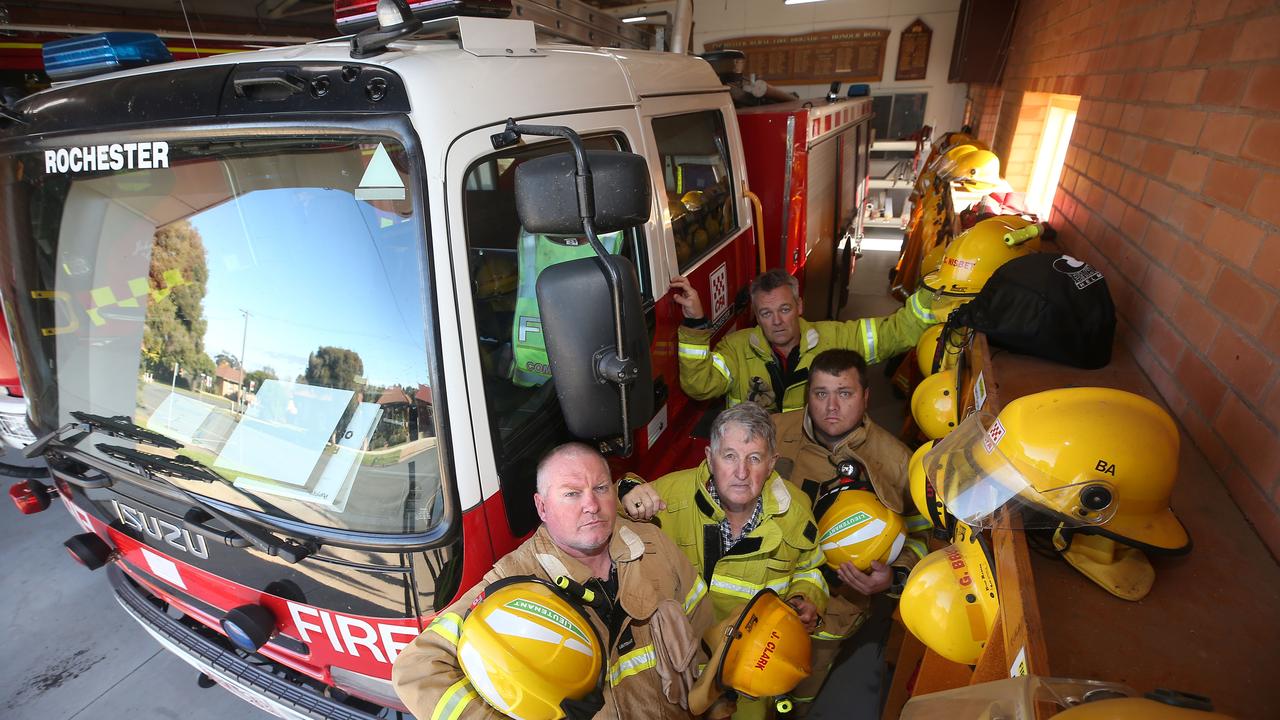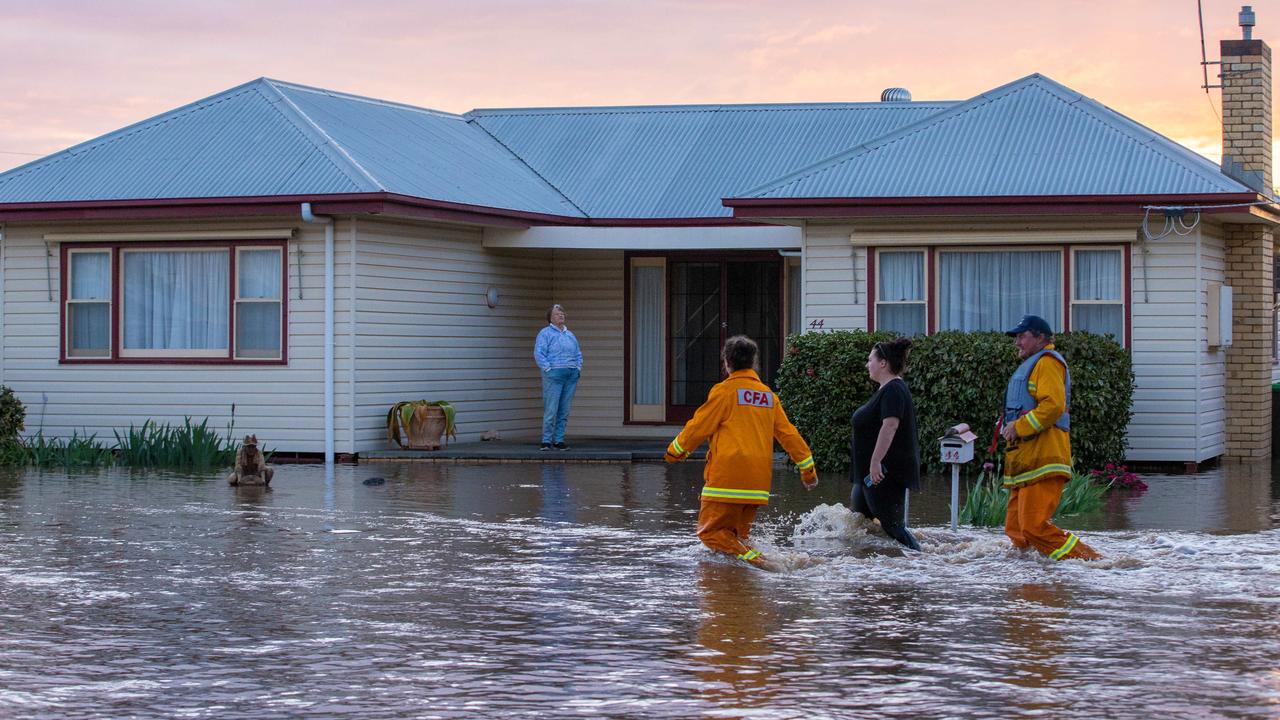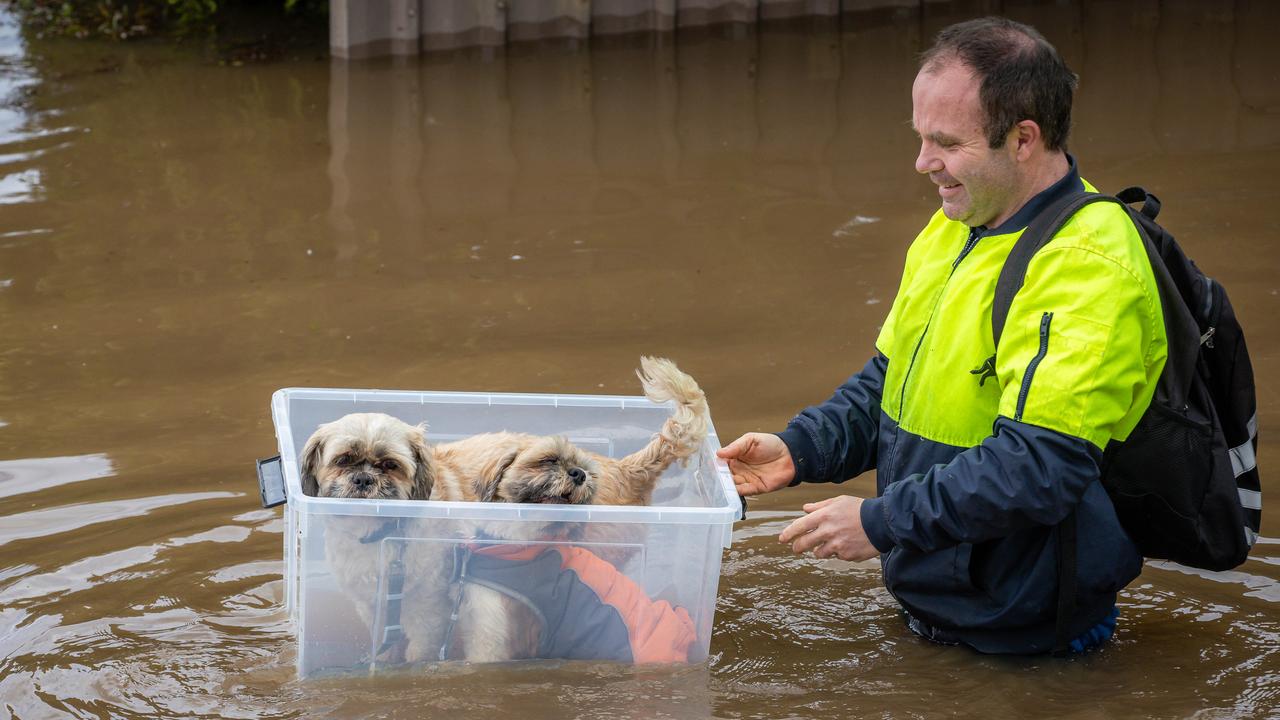A gentle breeze blows through the garage interior of the Rochester Fire Station on Mackay St.
It’s clean and dry for the first time in a week, the mud finally gone.
Dirt and debris was dumped by fast moving floodwater which inundated the station last week while crew members spent their days and nights rescuing people from life threatening flood waters.
The garage is lined with open lockers, fire hats and jackets hanging from hooks.
About 60 trophies — mostly brass, others silver, some crystal were housed in a display case close to the ceiling, safe from the chaos below.

Overlooking it all are five honour boards high on the wall, close to the ceiling that show the organisation, now the CFA, started life in 1875 as the Rochester Urban Fire Brigade and that the station once also housed the Rochester Rural Fire Brigade.
The CFA crew now has close to 40 members, among them Chris Nisbet, a volunteer with 30 years of experience.
He moved to Rochester only four years ago, bringing with him a wealth of knowledge which would be put to the test sooner than anybody could have expected.
The Rochester CFA crew knew a serious situation was brewing in the days leading up to the flooding disaster.
Its members were part of the town hall briefings on the Tuesday and Wednesday before the floodwater hit.
The brigade, lead by captain Luke Warren, made the crucial decision to locate one of its tankers on the eastern side of the Campaspe River which runs through Rochester.

It proved a vital decision for the rescues to come.
Mr Nisbet and fellow CFA member Cameron Lovering were the only members of the crew who lived on the eastern side of the river and it fell to them to perform the rescues in that part of the town, as Rochester was cut off by the water.
Residents of the town had been told to evacuate on Thursday, October 13, but that was easier said than done for many of the sick, the frail, the elderly and those with special needs in the town.
This is a diary of Mr Nisbet’s experiences.
Friday, October 14, afternoon:
The floodwaters were starting to rise and it was evident there were no other support services in this part of the town.
We had one fire truck on our side and on the other were two tankers, one pumper, a FCV and a “rehab” vehicle which is a medical support vehicle.
My wife Libby and I live on Pascoe St and our children, both in their 20s are based outside of the area.
Libby and I are fortunate our house did not flood and she was able to care for the people we rescued on Friday night.

The first call came through at about 5pm to rescue an 81-year-old man and his 33-year-old granddaughter who were trapped in a house.
It was a rescue from neck deep fast flowing water.
Fortunately Cameron (Mr Lovering) is ex-military and was military trained for water rescues.
I was on the safety line for the extraction.
We took the grandfather and granddaughter to my house for Libby to look after them and went out on our next call-out – an elderly couple who were in midriff high water inside their home.
We took them to my neighbour’s house to be cared for there by the Rotary President Heather Watson.

The third rescue was for a single man.
At about 1.30am I received a frantic call from my wife.
Our two clydesdale horses — Big Red and Gilbert — were in paddocks a couple of streets from our home.
We thought they would be fine there but it was flooding.
I rushed home to help Libby bring them to our house, in the dark and through floodwaters.
I got to bed at about 2.30am.
Saturday, Oct 14:
We were up early in the morning and door knocking people’s homes to see how they were faring.
At 9am a call came in. There had been a fatality.
We went to the address to rescue the wife of the man who had died.
Across the road, an extremely frail man hung onto a fence in the floodwaters, trying to get to us.
We yelled at him to stay where he was and we drove across, through the floodwaters.
Cameron got into the water on the line and grabbed the gent, just as he collapsed.
He had finished chemo the day before and was extremely frail.
He is now in Bendigo Hospital, recovering.
If we had not got to him, I have no doubt he would have been another fatality.
Later during the day, the SES sent a barge across as we continued rescuing people.
Sunday, October 15:
Despite repeated evacuation orders, a significant number of people were still in town.
We had buses to help people evacuate but the state of the roads were hindering our efforts.
They just couldn’t get through.
The rescued people should have been taken to evacuation relief centres.
Instead, the community of Rochester came together, sheltering their neighbours in their homes.
People were really good at coming together and helping each other.
I think a lot of people stayed in Rochester because they weren’t expecting it to be this bad.
The flood in 2011 was a benchmark in a lot of people’s minds.
Many residents believed that because their homes were safe last time, they would be all right this time.
That wasn’t the case.
Monday:
The real turning point came when we were running only on adrenaline.
There was still so much to do — all we could think of was the next task in front of us.
The full emotion of the situation had not begun to hit.
At 11am, we could get across the bloated river for the first time in days.
Finally we could get supplies of food and water to areas that had been cut off.
Rescues continued, but they weren’t for people left stranded in flooded houses. Instead we were dealing with medical emergencies, like the need for dialysis.
As the day neared a close, we headed back to the station.
We could finally catch up with the rest of our crew — to feel that camaraderie of a team that had dealt with disaster and gotten through it.
Four days after floodwaters hit our small town, we could begin to think about having a break.
There would be a big clean up ahead but — for now — we could rest.



Add your comment to this story
To join the conversation, please log in. Don't have an account? Register
Join the conversation, you are commenting as Logout
As tobacco wars rage, a political fight is heating up behind the scenes
The Victorian, Queensland and New South Wales governments are vowing not to back down in their push for extra federal funding to tackle the tobacco wars.
Is this the best of Victoria? State govt’s massive tourism pitch
International marketing partnerships will be used to promote Melbourne and regional Victoria in a major campaign aimed at growing the state’s visitor economy.